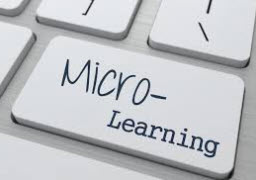
Microlearning is the concept of providing bite-sized information to support and enhance student learning. The expansion of microlearning in higher education allows for on-demand learning. Students have access to resources when they need them and on the go via their devices. It increases their retention of information since they learn at their own pace and review as required; therefore, deepening their learning process. This level of personalization means that students can focus on mastering their skills in a particular area of expertise, preparing them for their future careers.
MICROCREDENTIALS:
These programs are certifications of mastery; which, digital badges verify the attainment of specific competencies. In higher education, microcredentials facilitates access to skills-based programming enabling students to hone their abilities in their skill. Courses are affordable, and learners can study on their own time. The programs allow for shorter-term credentials enabling career mobility in less time than traditional degrees. Therefore, meeting their immediate career goals or preparing them for their future career.
OPPORTUNITY STATEMENT:
Microlearning offers a sensible solution to time-constrained post-secondary students looking to pursue flexible, workplace-relevant and up-to-date technology courses in their own time. Microlearning can be used as a part of a blended-learning solution to courses in higher education as well as stand-alone courses offered through MOOCs and university partnerships with course designers. With the growing number of people looking to pursue post-secondary education in the near future and the rising use of mobile-only internet, microlearning may become prevalent in higher education in the near future.
ESSENTIAL RESOURCES:
Websites
OER: Microlearning for Higher Education Students
edX: MicroBachelors or MicroMasters
Articles
Kazin, C. (2017, August 15). Microcredentials, MicroMasters, and Nanodegrees: What’s the Big Idea? The EvoLLLution. Retrieved February 7, 2022, from https://evolllution.com/programming/credentials/microcredentials-micromasters-and-nanodegrees-whats-the-big-idea/
Kohler, M., Gamrat, C., Raish, V., & Gross, E. (2021). Microlearning and Micro-Credentials in Higher Education. In J. R. Corbeil, B. H. Khan, & M. E. Corbeil (Eds.), Microlearning in the Digital Age: The Design and Delivery of Learning in Snippets. Routledge. https://doi.org/https://doi.org/10.4324/9780367821623
MarketWatch. (2021, November 25). Microlearning Market Insights by Emerging Trends, Growth and Forecast till 2024. Retrieved February 9, 2022, from https://www.marketwatch.com/press-release/microlearning-market-insights-by-emerging-trends-growth-and-forecast-till-2024-2021-11-25?tesla=y
Pappas, C. (2016, March 15). Microlearning In Online Training: 5 Advantages And 3 Disadvantages. eLearning Industry. Retrieved February 7, 2022, from https://elearningindustry.com/microlearning-in-online-training-5-advantages-and-3-disadvantages
This is a repost of the OER Microlearning for Higher Education Students from week 7 by Anna Ayoung-Stoute and Alexis Reeves
